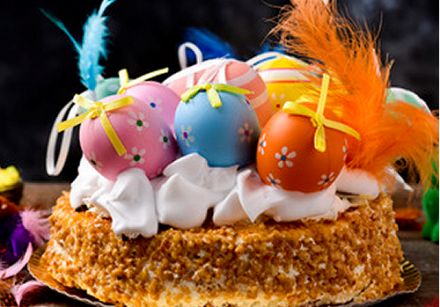Easter week in Barcelona, known as Semana Santa (holy week), wouldn't be a true Easter celebration without La Mona de Pascua. Traditionally godparents call their godchild Mona, a Moroccan word meaning "gift."
There are two types of Mona de Pascua. The traditional cake consists of a giant doughnut covered with hard-boiled eggs (the number of eggs corresponding to the age of the godchild). Why eggs? Because observant Catholics did not eat meat or eggs during Lent - therefore the eggs were kept and used to make the egg for Easter weekend.
The more recent version of La Mona de Pascua doesn't contain as many eggs. As pastry techniques advanced, bakers began making the eggs out of chocolate and added some apricot jam to fill the cake. Today, La Mona de Pascua is covered in chocolate frosting, almonds, chocolate eggs, colored feathers, and cartoon characters. The tradition has become so popular that Catalonian bakers sell up to 600,000 cakes every year during the Easter season.
- Beat the eggs and sugar in a bowl until light and pale.
- In another bowl, combine the flour and baking powder.
- Gradually sift the flour mixture into the egg/sugar mixture.
- Mix in the almond flour.
- Beat the egg whites. When partially beaten, gradually add in 50 g sugar, beating continuously until stiff peaks form.
- Fold the beaten egg whites into the batter.
- Pour the batter into a buttered and floured round cake tin.
- Bake in a preheated 180° C/350° F oven for about 40-45 minutes.
- Remove the cake from the oven and let cool.
Finishing
- Slice the cake into two layers. Spread the apricot jam on the lower one and replace the top.
- Melt the chocolate; cool to lukewarm.
- Mix together the chocolate and butter; pour over the cake to cover and let cool. Decorate as desired.


-

 Recipes
Recipes
-

 Products
Products
-

 Entertaining
Entertaining
-

 Chefs
Chefs
-

 Hints & Tips
Hints & Tips
-

 Glossaries
Glossaries









